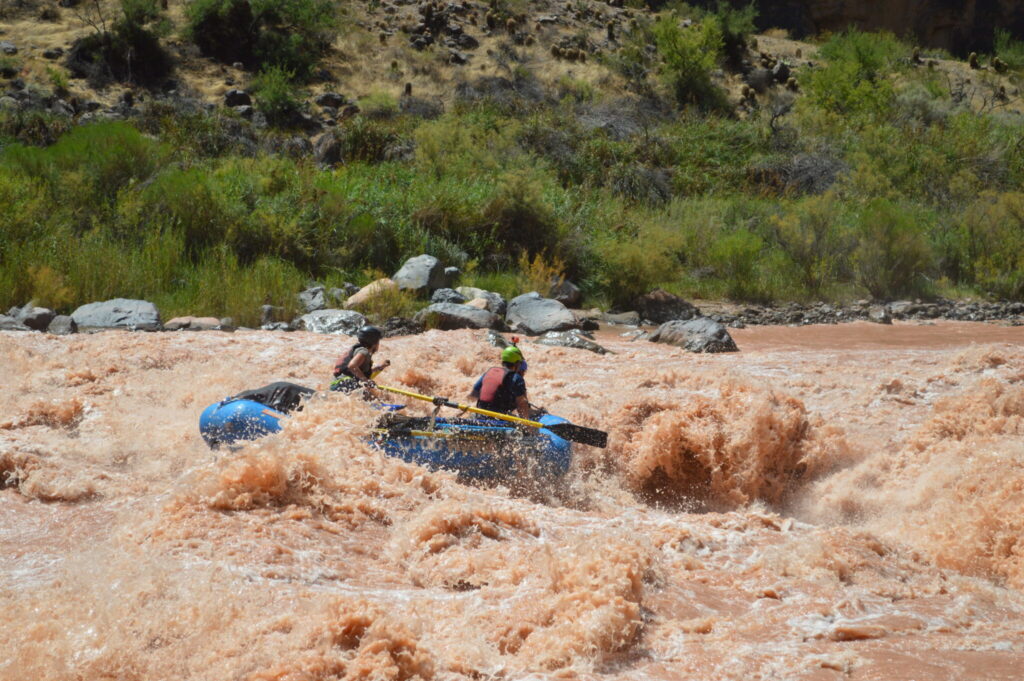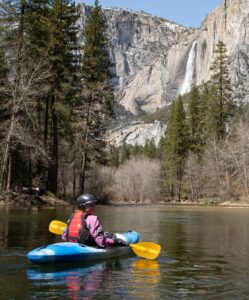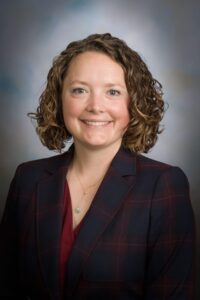
Students struggling to choose a single research focus area may want to take inspiration from Frances Davenport’s path: pursue them all.
Davenport was hired as an Assistant Professor in the Department of Civil and Environmental Engineering in April 2023. With research projects in hydrology; extreme climate events like severe precipitation, extreme heat, and flooding; and socioeconomic impacts of climate change, she can easily contribute to departments across campus. Davenport uses machine learning and statistical modeling in her research and enjoys writing code.
“My research interests span multiple traditional disciplines, so it can be a challenge to define in terms of a specific field. While not fitting into a specific definition can have its difficulties, on a day-to-day basis, I mostly appreciate being in a place where I get to do cool research,” said Davenport.
In fact, her first appointment at CSU was as a postdoctoral fellow in the Department of Atmospheric Science in 2022.
“Interesting questions arise at the intersection of traditional disciplines, where things don’t fall into one category.”
Drawing inspiration from the natural environment

Davenport has always enjoyed the outdoors, especially spending time whitewater kayaking. Rather than merely enjoying the adrenaline boost, she was also fascinated by the fluid dynamics of the flowing river and eddies, wanting to understand the “why” and “how” of water’s behavior. While she was an undergraduate student at Dartmouth, Hurricane Irene caused catastrophic flooding across New England, impacting the surrounding landscape and Davenport’s eventual academic direction.
“Witnessing how flooding can change the built and natural environment, and how it impacted many of the local communities, made a big impression on me,” said Davenport. “I always liked applying math and sciences to human problems, and studying extreme events like floods started to seem like a good fit.”
Trial and error
In pursuing her wide range of interests, Davenport also discovered which topics did not interest her as much, such as organic chemistry. Yet rather than a setback, Davenport considers it all relevant.
“There were times I took courses only to realize that it wasn’t my interest after all. Some would see that as a waste of time, but I think that many career and research trajectories are not linear. Deviations are part of the process,” said Davenport.
A problem-solver at heart, she embraces the innovation that comes from engineers having varying experiences and expertise.
“I think we get more creative solutions if engineers have exposure to different fields, rather than the exact same training,” said Davenport. “I see my trial and error process as having shaped how I approach research questions now, not as setbacks.”
Questions to be answered
After completing two bachelor’s degrees in engineering sciences, Davenport worked as a surface water engineer for a Denver consulting firm. She enjoyed working on hydraulic engineering projects, including a specific flood risk assessment for the South Platte River. Yet, she recognized the gaps in knowledge and practice when it came to predicting the impact of climate change on extreme events such as flooding, droughts, and wildfires.
Once again, she was drawn to unanswered questions. What role does climate change play in flooding events? How can we better predict extreme events such as droughts and floods before they occur?
Realizing she was more interested in research, she decided to pursue a Ph.D. from Stanford University in earth system science. At Stanford, her research focused on using new statistical methods to study how extreme precipitation and flooding are changing and how these events impact society. One study analyzed the economic costs of extreme precipitation compounded by climate change in the United States, highlighting her interdisciplinary approach to research.
“I really enjoy collaborating on research ideas, and the collaborative culture here is one of the things I like most about CSU,” said Davenport. “It’s great to be at an institution like CSU with so many people working on climate change, water and sustainability.”
A teacher from the start

Davenport was teaching long before she knew she would be a professor. She grew up working as a summer camp counselor, teaching canoeing, and taught whitewater kayaking classes in college. As an undergraduate, she often took on teaching assistant roles. It was during her training to become a canoeing instructor that she was first introduced to some of the science on effective teaching.
“I was always fascinated with how to be an effective teacher. I have had many experiences, formal and informal, that helped me realize I enjoy teaching. Becoming a professor was a natural fit,” said Davenport.
Davenport is excited to be in the classroom this spring for the first time as an official professor. She also looks forward to establishing a research program in the department and growing a student research group.
Her advice to students? “Forge your own direction. There is a lot of opportunity for research and discovery in fields that have not yet been fully defined. You don’t have to fall into one category.”